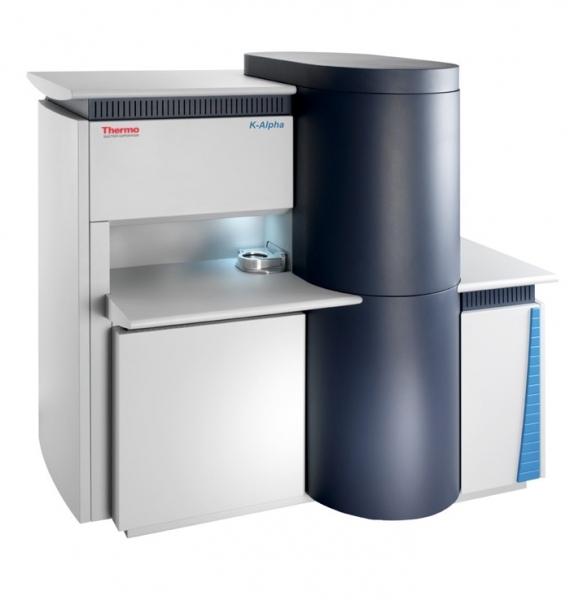You are currently viewing only those items made visible to the public. Click here to sign in and view the full catalogue.

X-ray Photoelectron Spectrometer
| MANUFACTURER | Thermo Scientific (manufacturer's website) |
|---|---|
| MODEL | K-Alpha |
| ACRONYM | XPS |
| TRAINING | Training is required to use this item and we can arrange this if needed. |
|---|
| CUSTODIAN | Sam Davis |
|---|---|
| Enquire about this item | |
| SITE | Main Campus |
Description
Fully integrated, monochromated small-spot X-ray Photoelectron Spectrometer (XPS) system. State-of-the-art performance, increased ease of use with multi-user environment and fully automated workflow from sample entry to report generation.
X-Ray Photoelectron Spectroscopy (XPS) or often referred to in general terms as Electron Spectroscopy for Chemical Analysis (ESCA). Used in the element identification of samples and can also provide information about an element's chemical environment or oxidation state. Can be used for almost any solid material, including insulators.
Typical applications
- Characterisation of the chemistry of surface treatments
- Functional group identification
- Corrosion /oxidation studies
- Evaluation of surface cleanliness
- Catalyst characterisation
Theory
XPS can also provide detailed chemical information about the surface, as the energy of the photoelectron is dependent on the local chemical environment of the atom from which it arose. This often allows the chemistry of the surface to be inferred and the functional groups present to be identified.
Upgrades
- Additional tilt module for Angle resolved XPS.
Specification
| Ion Gun Operating Range | 100 eV - 4 keV |
| Maximum Sample Size | Maximum analysis area - 60 x 60 mm Maximum thickness - 20 mm |
| Types of Sample Material | Powders, Solids, Ceramics, Metals, Polymers |
| Tilt Range | -90° to +90° |
Upgrades
Future Upgrades
Item ID #.
Last Updated: 18th June, 2024





